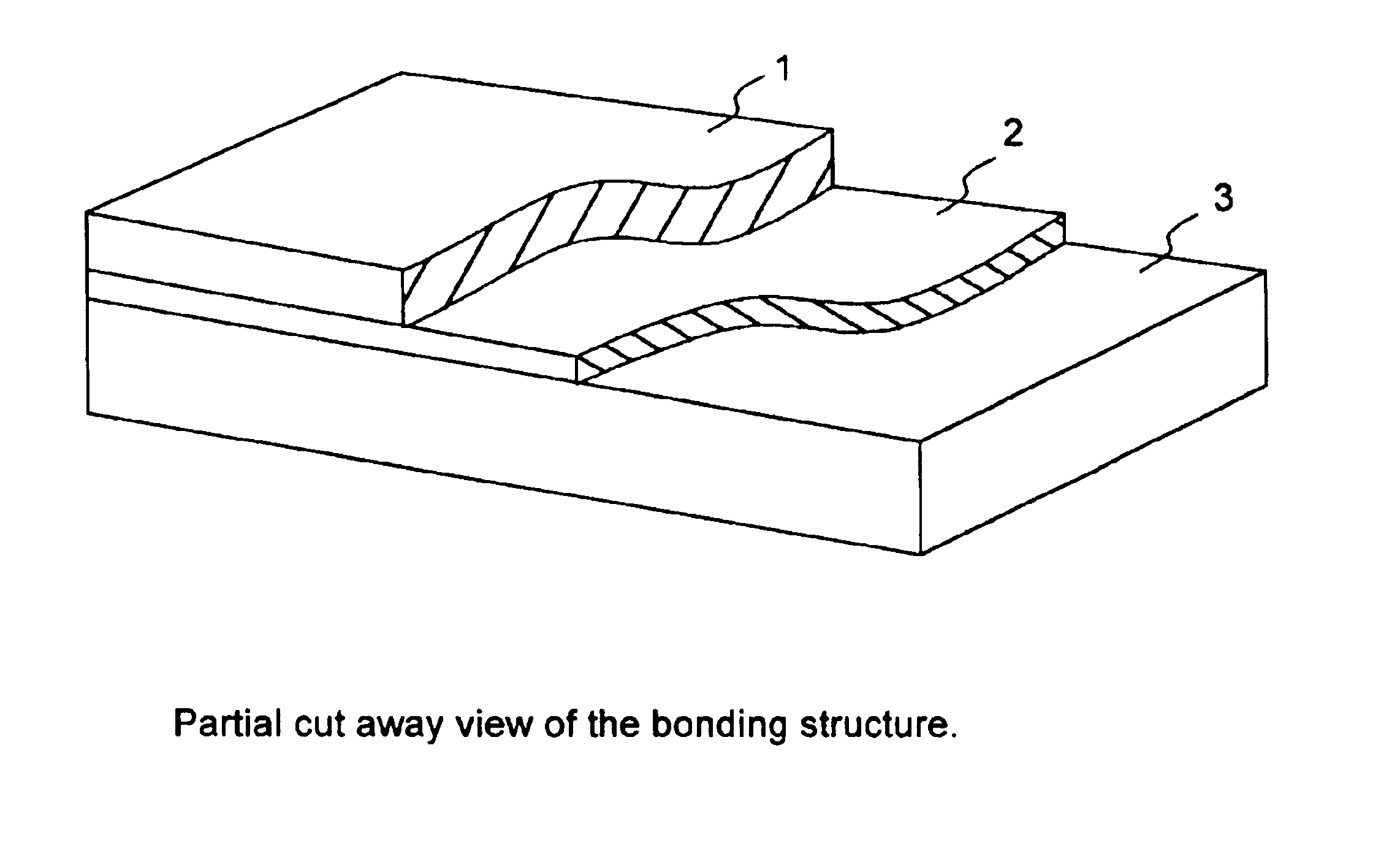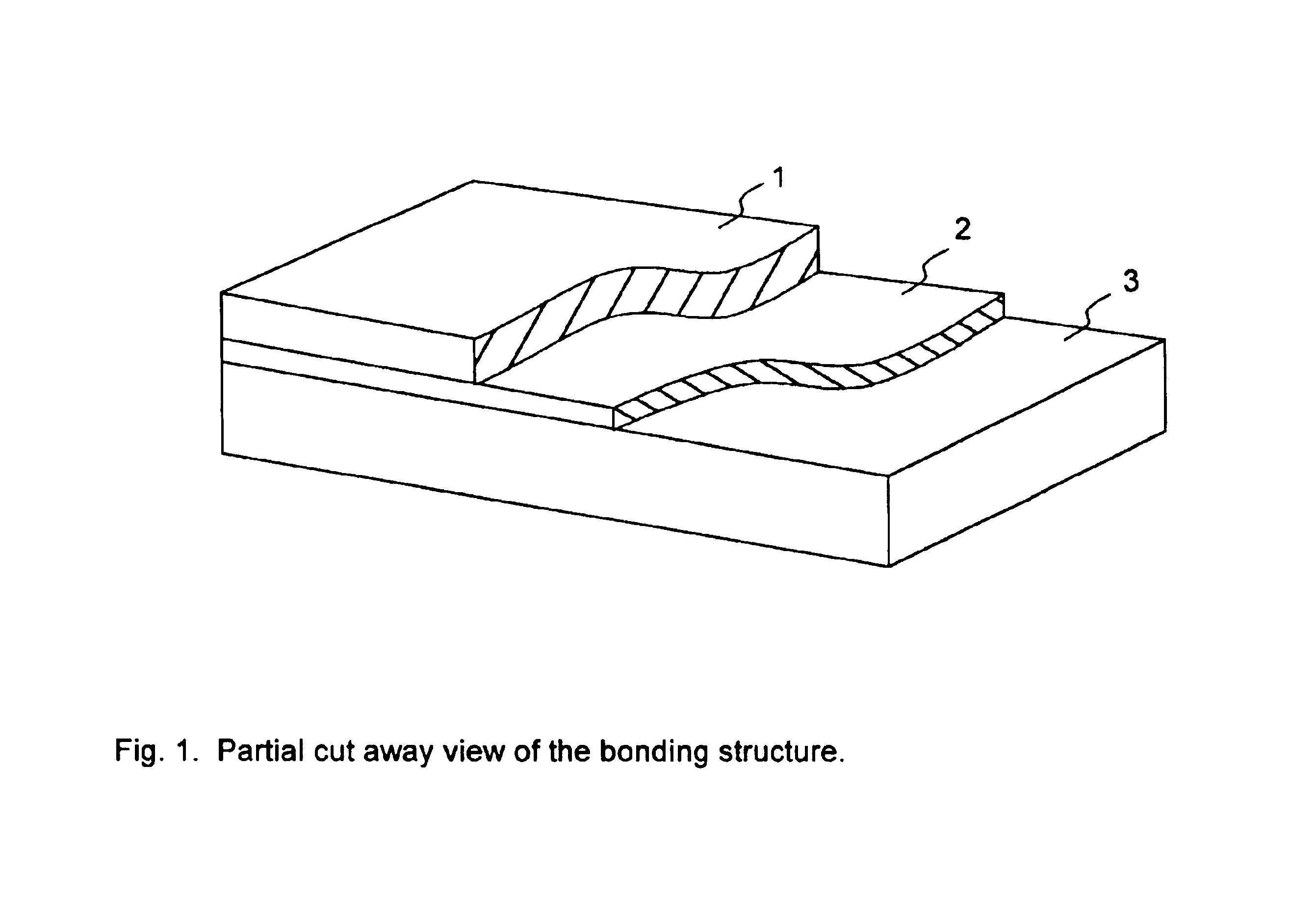Bonding of parts with dissimilar thermal expansion coefficients
a technology of thermal expansion coefficient and dissimilarity, applied in the direction of transportation and packaging, basic electric elements, thin material handling, etc., can solve the problems of material breakage, severe restrictions on material selection, and may not be acceptable, functional or economic perspective, and achieve the desired level of relative position accuracy, long-lasting bonding of materials, and high stiffness
- Summary
- Abstract
- Description
- Claims
- Application Information
AI Technical Summary
Benefits of technology
Problems solved by technology
Method used
Image
Examples
Embodiment Construction
[0012]Some of the preferred embodiments of the present invention are described here. The process will start by identifying the two (or more) materials to be bonded together (1 and 3); these materials can be of any kind, but would generally be solids belong to one of these groups: glasses, pure metals, alloys, semiconductor materials, ceramics, cermets, composites, inorganic polymers or organic polymers. A specific example could be a silicon die that is to be bonded to a sheet formed out of a specific alloy. Additional parameters that must be identified are the temperature range to which the bond will be exposed to, including the lock-in temperature during the bonding process, the coefficients of thermal expansion for the two (or more) materials in this temperature range and the desired physical characteristics of the system.
[0013]The second step is to identify the type of intermediary layer 2, that will be used between the two materials 1 and 3, that are being bonded. The selection ...
PUM
| Property | Measurement | Unit |
|---|---|---|
| chemical composition | aaaaa | aaaaa |
| thermal expansion coefficients | aaaaa | aaaaa |
| temperature | aaaaa | aaaaa |
Abstract
Description
Claims
Application Information
 Login to View More
Login to View More - R&D
- Intellectual Property
- Life Sciences
- Materials
- Tech Scout
- Unparalleled Data Quality
- Higher Quality Content
- 60% Fewer Hallucinations
Browse by: Latest US Patents, China's latest patents, Technical Efficacy Thesaurus, Application Domain, Technology Topic, Popular Technical Reports.
© 2025 PatSnap. All rights reserved.Legal|Privacy policy|Modern Slavery Act Transparency Statement|Sitemap|About US| Contact US: help@patsnap.com


